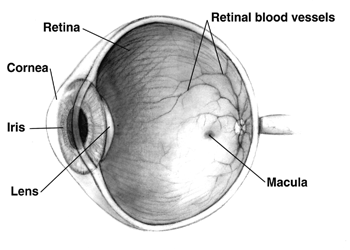
All About the Eye and Vision - Diseases - Wikipedia

An eye is an organ of vision that detects light. Different kinds of light-sensitive organs are found in a variety of organisms. The simplest eyes do nothing but detect whether the surroundings are light or dark, while more complex eyes can distinguish shapes and colors. Many animals, including some mammals, birds, reptiles and fish, have two eyes which may be placed on the same plane to be interpreted as a single three-dimensional "image" (binocular vision), as in humans; or on different planes producing two separate "images" (monocular vision), such as in rabbits and chameleons.
A Simple Eye Scan Could Flag Heart Risks - And How Fast You're Aging Science Alert - November 5, 2025

The work of a team from the UK and Canada is the latest evidence in a growing body of research showing that our eyes carry signals about our general health and well-being.
New eye implants combined with augmented-reality glasses help blind people read again in small trial Live Science - October 21, 2025
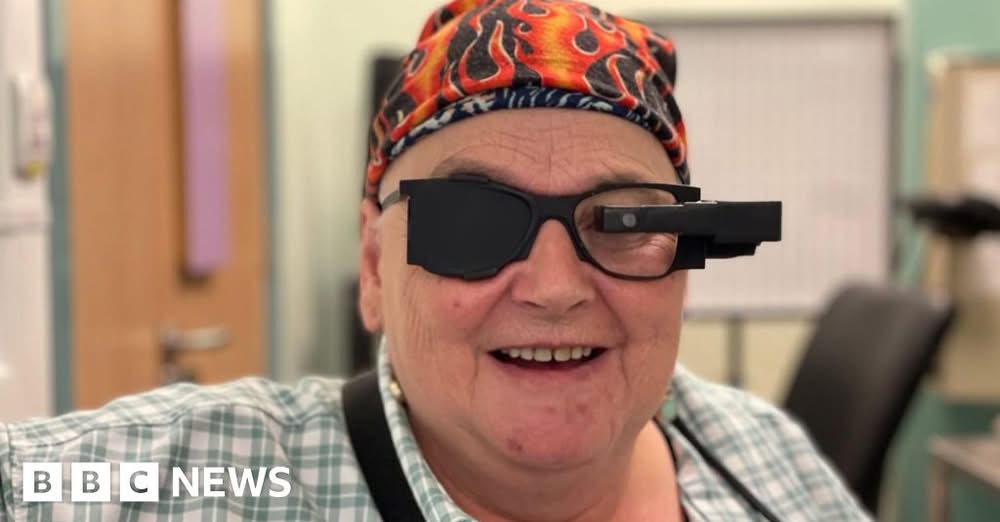
Life-changing eye implant at the back of the eye helps blind patients read again BBC - October 20, 2025

A group of blind patients can now read again after being fitted with a life-changing implant at the back of the eye. A surgeon who inserted the microchips in five patients at Moorfields Eye Hospital in London says the results of the international trial are "astounding". Sheila Irvine, 70, who is registered blind, told the BBC it was "out of this world" to be able to read and do crosswords again. "It's beautiful, wonderful. It gives me such pleasure."
Half of adults suffer from dry eyes, but most never get help Science Daily - September 15, 2025
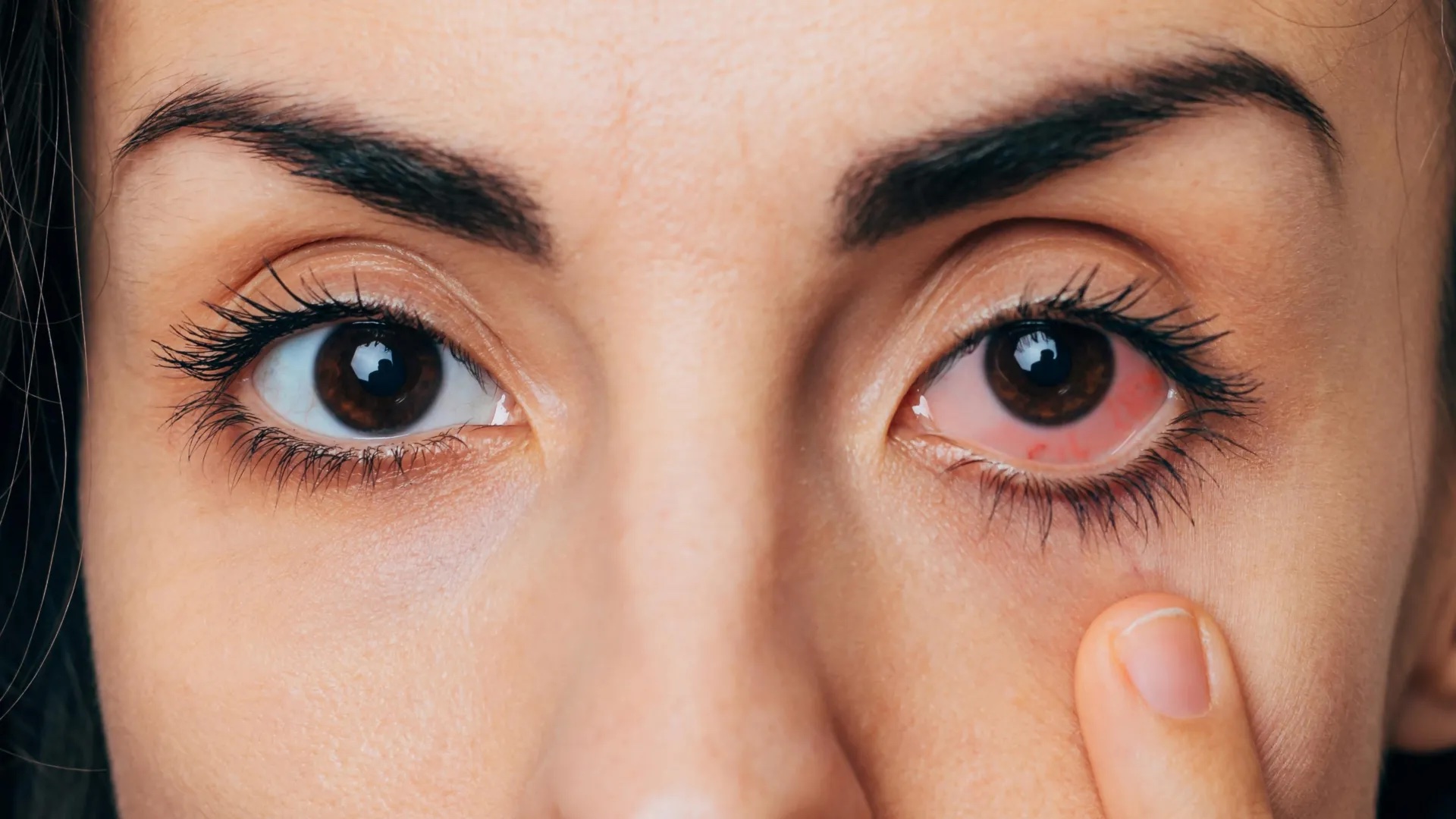
Dry eyes are far more common than previously believed, with over half of adults in the US and Europe experiencing symptoms, yet most remain undiagnosed for years. The large-scale NESTS study reveals that sufferers often endure daily discomfort that disrupts work, driving, and even surgery outcomes. Many accept the condition as part of aging, unaware that simple treatments could provide relief.
Patients who had cataracts removed or eyesight corrected with a new type of lens have good vision over all distances Medical Express - September 14, 2025

Patients who have a new type of lens implanted in their eyes during surgery for cataracts or to correct their eyesight have excellent or good vision over distances both near and far, and often no longer need spectacles for reading.
AI can now predict who will go blind, years before doctors can Science Daily - September 14, 2025
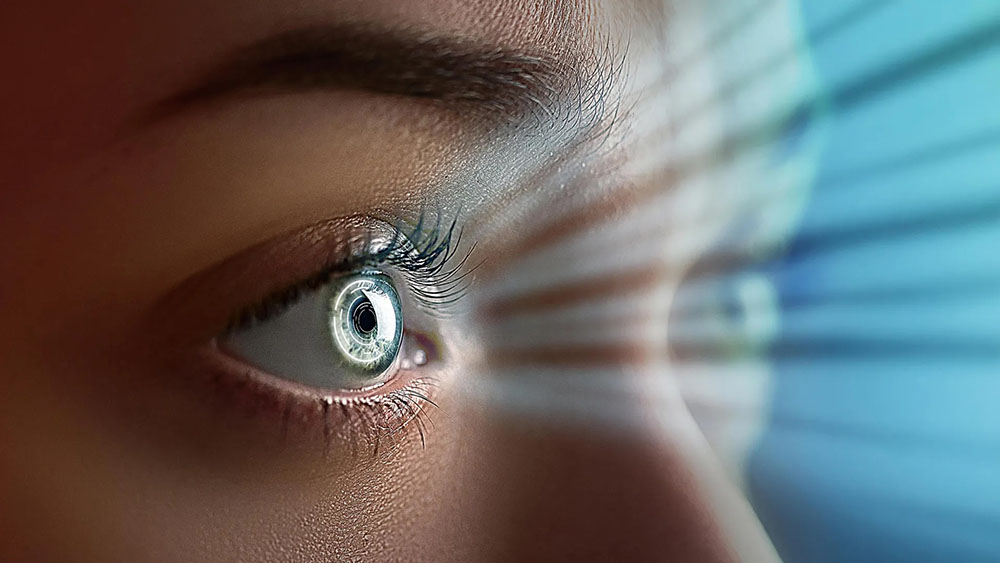
AI can now predict which keratoconus patients need urgent corneal treatment before irreversible damage sets in. The breakthrough could save eyesight, reduce transplants, and reshape eye care.
Why is color blindness so much more common in men than in women? Live Science - July 16, 2025
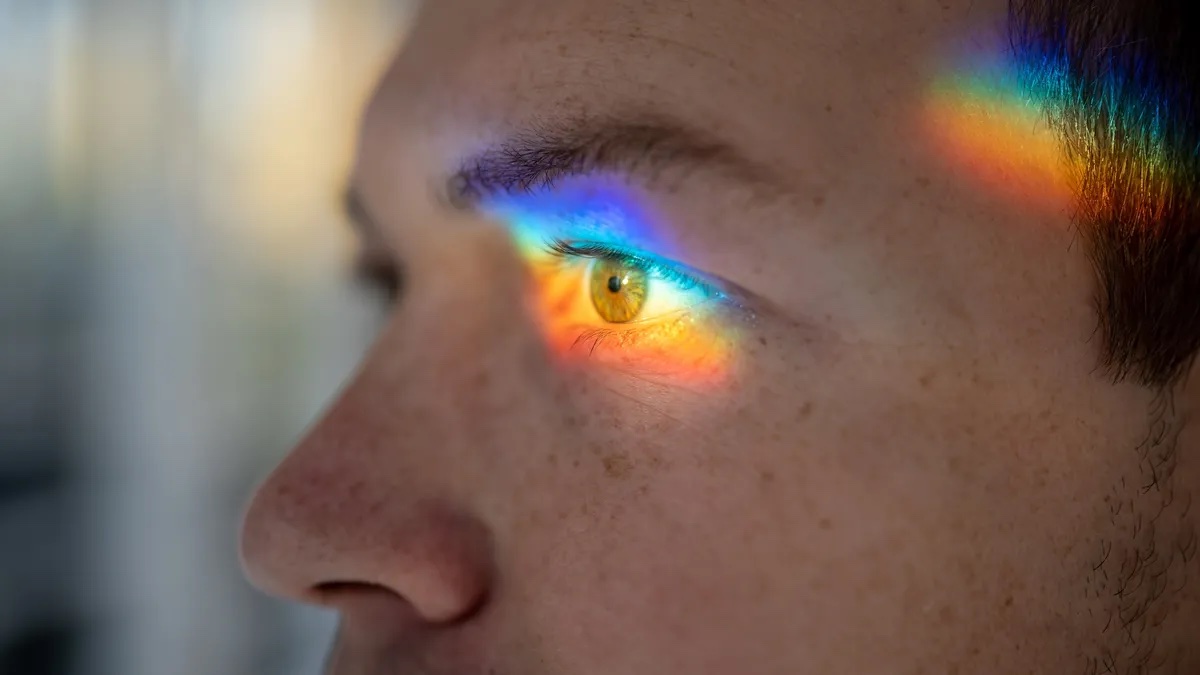
An estimated 300 million people worldwide are color-blind. This typically means they can't distinguish certain shades of color, they struggle to tell how bright colors are or, more rarely, they can't see any colors at all. Color blindness doesn't affect males and females equally, though. According to Cleveland Clinic, the condition affects about 1 in 12 males, compared with 1 in 200 females. So why are so many more males color-blind than females? The answer comes down to the genetics governing the function of the human eye. People see colors using specialized cells in the backs of their eyeballs called cones. There are three types of cone cells, and each is tuned to be most sensitive to certain wavelengths of light.
Revolutionary Contact Lenses Let Human Eyes See Invisible Light Science Alert - May 23, 2025
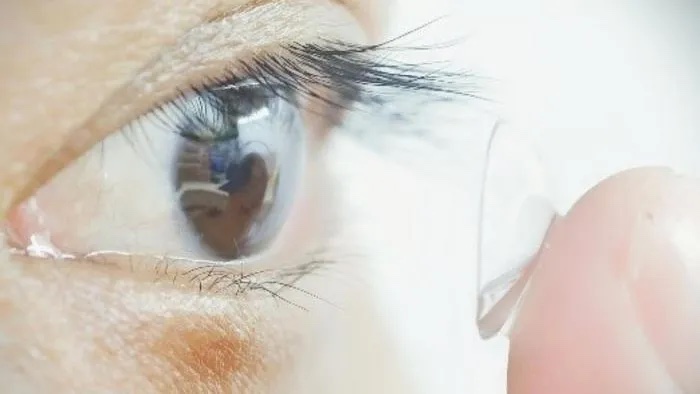
Scientists in China have developed contact lenses that let wearers see light normally invisible to the human eye. Cooler still, the lenses work better through closed eyelids, and other versions could help correct color blindness. The human eye can see a relatively limited range of colors – light with wavelengths of between about 400 and 700 nanometers. In typical human-centric fashion, we call that the 'visible' part of the spectrum, even though other animals can see beyond it.
Scientists Say They Found a New Color Humans Have Never Seen Before Science Alert - April 23, 2025

For the first time, humans might have glimpsed a rainbow of color that lies just beyond our sight - including a "blue-green of unprecedented saturation". You've never seen it before because you can't. It exists in a colorspace that our eyes have no access to.
Mysterious Condition Makes Human Eyes Sparkle Like a Galaxy Science Alert - May 23, 2024

The age-related condition is called asteroid hyalosis (AH), and no one knows why it occurs in only some individuals, let alone what it says about a person's overall health
The Color of Your Eyes Could Actually Affect Your Reading Ability Science Alert - February 14, 2024
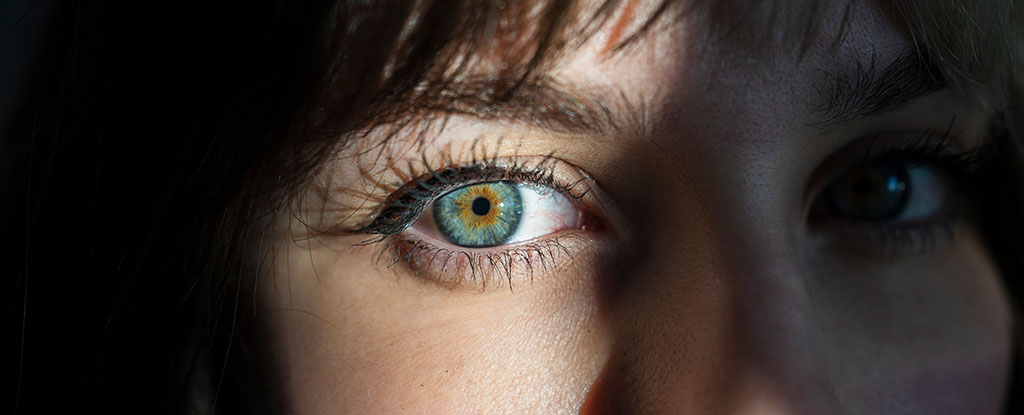
Amazing Spiral-Shaped Contact Lens Uses 'Optical Vortex' to Correct Vision Science Alert - February 9, 2024
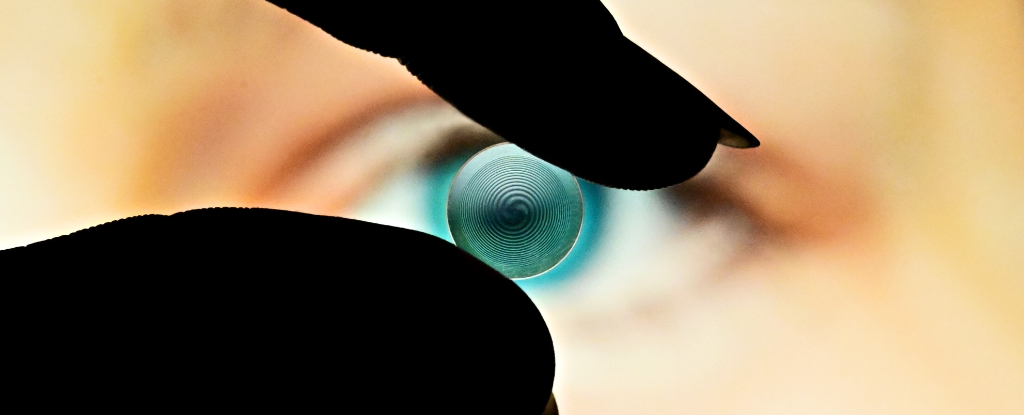
Scientists have designed a striking new contact lens that could revolutionize ophthalmology. It's based on a spiral pattern that lets the eye focus at different distances and in varying lighting conditions.
Micrometers-Thin Battery Could Power Smart Contact Lenses And Charge Using Human Tears IFL Science - August 29, 2023
In a move that takes sci-fi tech a step closer to reality, scientists have developed a super-thin battery that could be used to power smart contact lenses and even charge up using tears.
Groundbreaking Stem Cell Therapy Can Repair Vision After Eye Injury Science Alert - August 28, 2023
Four patients with severe chemical burns to one eye have shown early positive results in a phase 1 clinical trial of a therapy based on their own stem cells. Four patients with severe chemical burns to one eye have shown early positive results in a phase 1 clinical trial of a therapy based on their own stem cells.
Even without further treatment, two of the patients reported significant improvements in their vision after a year of follow-up, according to a team of US researchers. The other two patients were able to undergo corneal transplants, which had previously not been an option due to the severity of their injuries.Even without further treatment, two of the patients reported significant improvements in their vision after a year of follow-up, according to a team of US researchers. The other two patients were able to undergo corneal transplants, which had previously not been an option due to the severity of their injuries.
Your Pupils Can Reveal a Hidden Signal About Your Brain Function Science Alert - August 12, 2023
The way your pupils react to light exercise could reveal whether you're getting one of the key benefits of movement – the cognitive boost linked to improved mood and enhanced executive function.
Quantum Chemistry Happening Inside Your Eyes Protects Against Vision Loss Science Alert - May 22, 2023
very color, every flash, every sunray exacts a toll on the light-sensitive tissues at the back of our eyes, producing toxic materials that risk damaging the very cells that allow us to see. Thankfully, the pigment responsible for darkening our hair, skin, and eyes moonlights as a clean-up crew, mopping up one such dangerous compound before it accumulates into damaging clumps.
Millions See The World Through a 'Static' Haze Called Visual-Snow Syndrome Science Alert - January 20, 2023

Visual-snow syndrome is a neurological condition with a constellation of visual and non-visual symptoms. The hallmark symptom is seeing static or clashing lights and flickering dots that obstruct your vision 24/7, whether your eyes are open or closed.
Researchers use 3D bioprinting to create eye tissue - technique provides model for studying genesis of age-related macular degeneration and other eye diseases Science Daily - December 22, 2022
Scientists used patient stem cells and 3D bioprinting to produce eye tissue that will advance understanding of the mechanisms of blinding diseases. The research team printed a combination of cells that form the outer blood-retina barrier--eye tissue that supports the retina's light-sensing photoreceptors. The technique provides a theoretically unlimited supply of patient-derived tissue to study degenerative retinal diseases such as age-related macular degeneration (AMD).
A Tiny Flicker in Your Eyes Opens a Window to Your Private Thoughts Science Alert - December 16, 2022
When we are shown two options, our eyes tend to flick from one to the other and back again several times as we deliberate on the pros and cons of each. Researchers at Johns Hopkins University in the US have found that the speed with which our eyes dart between options gives away our true preference and predicts the ultimate decision we will make.
Clinical Trial Restored Sight to 20 People With Corneas Made From Pig Skin. Many of the patients were blind before receiving the help of this bioengineered tissue Science Alert - August 14, 2022
Incredibly, after two years, all 14 of those blind people had their vision restored and three of them, and three of them now have perfect 20/20 vision.
Pupils reveal 'aphantasia' - the absence of visual imagination Medical Express - April 20, 2022
A study found that the pupils of people with aphantasia did not respond when asked to imagine dark and light objects, while those without aphantasia did.
Scientists show how the action of the eye triggers brain waves to help remember socially important information Medical Express - March 18, 2021
In a study led by Cedars-Sinai, researchers have uncovered new information about how the area of the brain responsible for memory is triggered when the eyes come to rest on a face versus another object or image. While vision feels continuous, people move their eyes from one distinct spot to another three to four times per second. In this study, investigators found that when the eyes land on a face, certain cells in the amygdala, a part of the brain that processes social information, react and trigger memory-making activity
Successful bionic eye tech aims to help blind people see BBC - February 15, 2022
Existing bionic eye systems have a chip fitted to a person's retina, which connects wirelessly to a camera fitted to glasses.
A Key Detail in Your Retina Could Indicate How Healthy Your Brain Is in Reference to Alzheimers Science Alert - February 15, 2022
Alzheimer's is an insidious brain disease marked by a slow mental decline that can develop unnoticed for decades before symptoms arise, but hidden signs of the condition might exist much sooner. New research suggests that the thinning of a person's retina – the light-sensitive tissue that lines the back of the eye – in middle age is linked to cognitive performance in their early and adult life.
Brain Implant Gives Blind Woman Artificial Vision in Scientific First Science Alert - October 28, 2021
A 'visual prosthesis' implanted directly into the brain has allowed a blind woman to perceive two-dimensional shapes and letters for the first time in 16 years. The US researchers behind this phenomenal advance in optical prostheses have recently published the results of their experiments, presenting findings that could help revolutionize the way we help those without sight see again.
Before eyes open, they get ready to see Medical Express - August 25, 2020
A KAIST research team's computational simulations demonstrated that the waves of spontaneous neural activity in the retinas of still-closed eyes in mammals develop long-range horizontal connections in the visual cortex during early developmental stages. This new finding featured in the August 19 edition of Journal of Neuroscience as a cover article has resolved a long-standing puzzle for understanding visual neuroscience regarding the early organization of functional architectures in the mammalian visual cortex before eye-opening, especially the long-range horizontal connectivity known as "feature-specific" circuitry.
Researchers uncover genetic cause behind glaucoma Medical Express - April 30, 2020
54 million year-old fossil flies yield new insight into the evolution of sight PhysOrg - August 15, 2019
Fossilized flies that lived 54 million years ago have revealed a surprising twist to the tale of how insects' eyes evolved. These craneflies, unveiled in Nature today, show that insect eyes trap light the same way as human eyes, using the pigment melanin - yet another example of evolution finding similar solutions to similar problems.
Why So Many Bacteria Live on the Surface of Your Eye Live Science - June 22, 2019
You may be familiar with the idea that your gut and skin are home to a collection of microbes - fungi, bacteria and viruses - that are vital for keeping you healthy. But did you know that your eyes also host a unique menagerie of microbes? Together, they're called the eye microbiome. When these microbes are out of balance - too many or too few of certain types - eye diseases may emerge. With a recent study showing bacteria live on the surface of the eye and stimulate protective immunity, scientists are beginning to discover the microbial factors that can be exploited to create innovative therapies for a range of eye disorders like Dry Eye Disease, Sjogren's Syndrome and corneal scarring. One day it may be possible to engineer bacteria to treat eye diseases in humans.
With single gene insertion, blind mice regain sight Science Daily - March 15, 2019
Opsins make 'blind' cells light-sensitive; potential human treatment within three years
Gene Therapy for the Most Common Form of Blindness Gets Its First Human Test Gizmodo - February 19, 2019
An 80-year-old woman from the United Kingdom is the first patient to undergo gene therapy to treat age-related macular degeneration - the most common cause of sight loss in the world. It’s too early to tell if the procedure worked, reports the BBC, but for the millions of people around the world at risk of developing age-related macular degeneration, or AMD, the experimental intervention marked an important medical milestone nonetheless.
Microscopic eye movements affect how we see contrast
It is often difficult for a driver to see a person walking on the side of the road at night—especially if the person is wearing dark colors. One of the factors causing this difficulty is a decrease in contrast, making it hard to segment an object, such as a person, from its background. Researchers previously believed contrast sensitivity function - the minimum level of black and white that a person needs to detect a pattern was mainly dictated by the optics of the eye and processing in the brain. Now, in a study researchers explain that there is another factor at play: contrast sensitivity also depends on small eye movements that a person is not even aware of making.
Reading from a wall chart could become a thing of the past! Eye-test gadget lets you check whether you need glasses from the comfort of your own home Daily Mail - January 9, 2019
Testing your vision by reading tiny letters on a distant wall chart could become a thing of the past thanks to a revolutionary eye-testing gadget.
Why it doesn't get dark each time you blink: Scientists find a region of the brain that provides a picture of our surroundings even while our eyes are briefly closed Daily Mail - September 24, 2018
Scientists may have finally solved a long-standing mystery over why it doesn't get dark when we blink. Humans blink around once every five seconds to keep our eyes moist, briefly shutting off light from our eyes. Researchers have now found a brain region that they believe provides a picture of our surroundings while our eyes are closed for each brief second. It remembers what we've just seen and overlays the image onto the dark patches during blinks to create a continual image. Scientists say the region, which is involved in our short-term memory, allows us to maintain a stable idea of what's around us despite regularly shutting off our vision.
Glaucoma may be an autoimmune disease - Unexpected findings show that the body's own immune system destroys retinal cells Science Daily - August 10, 2018
A new study finds glaucoma may be an autoimmune disorder, mediated by T cells that target heat shock proteins in the retina. The discovery suggests it could be possible to develop new treatments for glaucoma by blocking this autoimmune activity.
Researchers map brain of blind patient who can see motion Science Daily - June 13, 2018
Since the visual processing centers of her brain went dark after a stroke, a Scottish woman has been unable to see objects. However, she has developed the remarkable ability to see objects in motion neuroscientists have discovered. A team led by neuropsychologist Jody Culham has conducted the most extensive analysis and brain mapping to date of a blind patient, to help understand the remarkable vision of a 48-year-old Scottish woman, Milena Canning. Canning lost her sight 18 years ago after a respiratory infection and series of strokes. Months after emerging blind from an eight-week coma, she was surprised to see the glint of a sparkly gift bag, like a flash of green lightning.
When the eyes move, the eardrums move, too Medical Express - January 23, 2018
The researchers found that keeping the head still but shifting the eyes to one side or the other sparks vibrations in the eardrums, even in the absence of any sounds. Surprisingly, these eardrum vibrations start slightly before the eyes move, indicating that motion in the ears and the eyes are controlled by the same motor commands deep within the brain. The findings, which were replicated in both humans and rhesus monkeys, provide new insight into how the brain coordinates what we see and what we hear. It may also lead to new understanding of hearing disorders, such as difficulty following a conversation in a crowded room.
The mysterious case of the boy missing most of his visual cortex who can see anyway Medical Express - December 8, 2017
The boy, the researchers told the audience, suffered major damage to his visual cortex as a result of medium-chain acyl-Co-A dehydrogenase deficiency at just two weeks old - a rare condition that results in severe damage to nerve cells due to an inability to convert some types of fats into energy. That meant the boy, who the researchers referred to as B.I., wound up without most of his visual cortex, a condition that for most people would result in cortical blindness. Cortical blindness is an odd condition in which the brain can still receive visual input, but cannot process what is seen, leaving the person with the sensation of sight without being able to actually see. But oddly enough, B.I. can see almost as well as any other boy his age.
Could This Bionic Vision System Help Restore Sight? Smithsonian - October 24, 2017
The technology gives hope that blind patients, who lost sight from disease, might one day emerge from the dark.
High-Speed 'Brain Modem' Could Restore Vision, Speech, and Movement
A California-based startup called Paradromics is developing a new technique for connecting the brain to computers with the goal of transmitting data at over one gigabit per second, effectively creating a high-speed neural broadband interface. In the near-term, the company is focused on using this cortical modem to restore speech functionality among people who have lost the ability to talk - for example, patients with Lou Gehrig’s disease, such as astrophysicist Stephen Hawking. If they are successful, the device will become a general brain-computer interface with broad implications for the field of prosthetics. High-definition cameras could be used to restore vision to the blind.
Why do we see monsters in the mirror? MNN - August 16, 2017

Here's a fun exercise, though you might not want to do it alone. Stare into a mirror for several minutes and you may notice your face begin to distort. It could even morph into something downright scary. Seeing monsters in mirrors has long been an effective horror movie device and grist for urban legends. It might sound like a bunch of superstitious hooey, but scientific research now says that seeing altered images in a mirror is a real thing, most likely due in part to a type of optical illusion called "peripheral fading" or the Troxler Effect.
Cells in the retina light the way to treating jet lag Medical Express - April 18, 2017
Researchers have found a new group of cells in the retina that directly affect the biological clock by sending signals to a region of the brain which regulates our daily (circadian) rhythms. This new understanding of how circadian rhythms are regulated through the eye could open up new therapeutic possibilities for restoring biological clocks in people who have jet lag through traveling or working night shifts.
Everyone has different 'bad spots' in their vision Medical Express - April 10, 2017
An image to demonstrate visual 'crowding' and test peripheral vision. Ensure that the red dot in the centre of the image is at eye level and focus on it. While holding your focus on the red dot, try to read the middle 'C' in every triplet. Is the gap facing left or right? You may find it easier to read in some directions than others. People usually find it easier to read below the dot than above, and easier still to the left or right.
Myopia cell discovered in retina Medical Express - February 6, 2017
Scientists have discovered a cell in the retina that may cause myopia when it dysfunctions. The dysfunction may be linked to the amount of time a child spends indoors and away from natural light. More than a billion people in the world have myopia, whose incidence is rising and is linked to how much time people spend indoors as children. The newly discovered retinal cell - which is highly sensitive to light - controls how the eye grows and develops. If the cell instructs the eye to grow too long, images fail to be focused on the retina, causing nearsighted vision and a lifetime of corrective glasses or contact lenses.
 No More Readers? New Implant May Help Aging Eyes NBC - September 13, 2016
No More Readers? New Implant May Help Aging Eyes NBC - September 13, 2016
Fading, close-up vision is one of the more vexing and ubiquitous consequences of growing older. For Cheri Ekstadt of Lakeville, Minnesota, it's meant buying nine pairs of reading glasses, which she places wherever she might come across something with fine print.
Gene therapy reverses sight loss and is long-lasting BBC - April 28, 2016
A genetic therapy has improved the vision of patients who would otherwise have gone blind. A clinical study has shown that the improvement is long-lasting and so the therapy is suitable to be offered as a treatment. The researchers will apply for approval to begin trials to treat more common forms of blindness, such as macular degeneration, next year. A team at Oxford University is treating a rare disorder called choroideremia. The disorder affects young men whose light-detecting cells in the backs of their eyes are dying because they have inherited a faulty gene.
Stem cells regenerate human lens after cataract surgery, restoring vision Science Daily - March 9, 2016
>
Researchers have developed a new, regenerative medicine approach to remove congenital cataracts in infants, permitting remaining stem cells to regrow functional lenses. The treatment, which has been tested in animals and in a small, human clinical trial, produced much fewer surgical complications than the current standard-of-care and resulted in regenerated lenses with superior visual function in all 12 of the pediatric cataract patients who received the new surgery.
The blind woman who switched personalities and could suddenly see Washington Post - November 28, 2015
>
After suffering a traumatic accident as a young woman, doctors diagnosed her with cortical blindness, caused by damage to the visual processing centers in her brain. So she got a seeing eye dog to guide her and grew accustomed to the darkness. Besides, B.T. had other health problems to cope with - namely, more than 10 wildly different personalities that competed for control of her body. It was while seeking treatment for her dissociative identity disorder that the ability to see suddenly returned. Not to B.T., a 37-year-old German woman. But to a teenage boy she sometimes became. With therapy, over the course of months, all but two of B.T.’s identities regained their sight. And as B.T. oscillated between identities, her vision flicked on and off like a light switch in her mind. The world would appear, then go dark.
Diabetic blindness could be reversed with eye injection The Telegraph - November 16, 2015
Researchers said that injections of the drug ranibizumab improved sight when compared to traditional treatments for people with proliferative diabetic retinopathy (PDR).
4 Ways To Actually Improve Your Eye Health Huffington Post - November 4, 2015
1. Eat For Your Eyes
2. Work It Out
3. Grab Your Shades
4. Blink
Restoring vision with stem cells Science Daily - October 6, 2015
Age-related macular degeneration could be treated by transplanting photoreceptors produced by the directed differentiation of stem cells, new research suggests. ARMD is a common eye problem caused by the loss of cones. Medical researchers have now developed a highly effective in vitro technique for producing light sensitive retina cells from human embryonic stem cells.
Human Eye's Blind Spot Can Shrink with Training Live Science - August 31, 2015
The blind spot of the human eye can be shrunk with certain eye-training exercises, thus improving a person's vision slightly, a small new study suggests. In the study of 10 people, researchers found that the blind spot - the tiny region of a person's visual field that matches up with the area in the eye that has no receptors for light, and hence cannot detect any image - can shrink 10 percent, with special training. That amount of change "is quite an improvement, but people wouldn't notice, as we are typically unaware of our blind spots. Normally, the brain pulls in visual information from the regions surrounding the blind spot, compensating for it, so people don't usually perceive it.
Why Your Eyes Dart Around When Dreaming Live Science - August 12, 2015
Brain recordings revealed that every time the dreamers moved their eyes, neurons in the medial temporal lobe of the brain showed a burst in activity. The vivid, bizarre images that infuse dreams are formed when people make the darting, rapid eye movements characteristic of a certain stage of sleep, new research suggests.The findings confirm a long-held scientific hypothesis that such rapid eye movements during sleep reflect a person viewing their dream-world in the same way that they would take in a scene when awake. Because the same types of visual activity are under a person's conscious control when the individual is awake, the dream-state brain-cell firing shows very clearly that dreaming is a form of consciousness. You might call it an altered state of consciousness, an alternative state of consciousness.
Eye movements 'change scenes' during dreams BBC - August 12, 2015
For the first time, scientists have recorded from individual brain cells during the dreaming phase of sleep. After each rapid eye movement (REM) they recorded bursts of activity that match what happens when we are awake and we see - or imagine - a new image. They suggest that these well-known flickering movements accompany a "change of scene" in our dreams.
Bionic eye fitted to British pensioner in world first The Telegraph - July 21, 2015
Ray Flynn was fitted with the bionic eye in June and can make out faces for the first time since he lost his vision to age related macular degeneration. Ray Flynn, 80, has been unable to make out faces since he developed Age Related Macular Degeneration (AMD) eight years ago, a devastating condition which affects 500,000 people in the UK. But in June he was fitted with an electrical implant which sends a video feed directly to the undamaged cells in his retina from a tiny camera attached to his glasses.
Why Do I See Patterns When I Close My Eyes? Huffington Post - June 26, 2015
Many people who have seen this visual phenomenon think it is an light-induced afterimage of what they had seen before they closed their eyes but an afterimage may only be part of what they are seeing. The real reason we are treated to this fuzzy fireworks display behind closed lids has to do with phosphenes! Phosphenes are the moving visual sensations of stars and patterns we see when we close our eyes. They are thought to be caused by the inherent electrical charges the retina produces even when it is in its "resting state" and not taking in a ton of information and light like it does when our eyes are open.
High-Tech 'Smart' Cane Helps Blind People Recognize Faces Live Science - May 12, 2015
A new, high-tech cane for the blind is designed to recognize the faces of the person's friends and family members. Using smartphone technology, the device - known as the "XploR" mobility cane - can identify faces from up to about 33 feet (10 meters) away, researchers say. If the cane recognizes someone, it alerts a visually impaired user by vibrating and transmitting a sound signal. The cane is also equipped with GPS to help the user navigate.
Shape of eye's 'light pipes' is key to color sorting BBC - March 6, 2015
Physicists have pinned down precisely how pipe-shaped cells in our retina filter the incoming colors. These cells, which sit in front of the ones that actually sense light, play a major role in our color vision that was only recently confirmed. They funnel crucial red and green light into cone cells, leaving blue to spill over and be sensed by rod cells - which are responsible for our night vision.
Key to this process, researchers now say, is the exact shape of the pipes. The long, thin cells are known as "Muller glia" and they were originally thought to play more of a supporting role in the retina. They clear debris, store energy and generally keep the conditions right for other cells - like the rods and cones behind them - to turn light into electrical signals for the brain.
An end to the medicine dropper for eye injuries? PhysOrg - February 4, 2015
For years, treating scratches and burns to the eyes has usually involved dropping medicine onto the eyes several times a day, sometimes for weeks—a treatment that lends itself to missed doses and other side effects. But scientists are now reporting in the journal ACS Nano a novel, drug-releasing wafer that patients can put directly on their affected eyes just once a day. The team says the device works better than drops and could help patients recover faster.
Ancient Eye Cells Suggest Color Vision Is 300 Million Years Old Live Science - December 23, 2014
Fossilized rod and cone cells - the kinds that help people see - have been discovered for the first time, researchers say.
The finding reveals that such eye cells have existed for at least 300 million years, and that the ancient fish they were discovered in likely saw in color, according to the study's scientists. Human vision depends on pigments that absorb light. These pigments lie inside cells known as rods and cones. Cones are sensitive to color and also help perceive fine detail and rapid changes. Rods are more sensitive to light than cones, but are not sensitive to color, and are responsible for peripheral and night vision. Both rods and cones are found in a layer of tissue in the back of the eye known as the retina.
Human eye can see 'invisible' infrared light Science Daily - December 3, 2014
Science textbooks say we can’t see infrared light. Like X-rays and radio waves, infrared light waves are longer than the light waves in the visual spectrum. But an international team of researchers has found that under certain conditions, the retina can sense infrared light after all.
Visual processes 'critical for sharp mind' BBC - August 5, 2014
Scientists say they have uncovered a basic process that may help explain why some people's thinking skills decline with age. Research indicates as individuals begin to have difficulties interpreting simple images, their overall intelligence falls too. Psychologists suggest this ability to glean information at a glance may play a critical role in how we deal with more complex tasks.
Scientists use stem cells to regenerate human corneas BBC - July 3, 2014
Scientists have developed a new technique to regrow human corneas. Using key tracer molecules, researchers have been able to hunt down elusive cells in the eye capable of regeneration and repair.
Rates of blindness and partial sight have plummeted in developed world Science Daily - March 26, 2014
Rates of blindness and impaired eyesight have plummeted over the past 20 years in the developed world. But macular degeneration has replaced cataract as the leading cause of blindness in rich countries, reveals an analysis of the available.
Electrical Burn Causes Man's Star-Shaped Cataract Live Science - January 23, 2014
A 42-year old electrician in California developed star-shaped cataracts in his eyes after a serious work-related accident caused electricity to run through his body, according to a new report of the case. The man's left shoulder came into contact with 14,000 volts of electricity, and an electric current passed through his entire body, including the optic nerve - the nerve that connects the back of the eye to the brain. Four months after the accident, the man had surgery to remove the cataracts and implant a new lens, and his vision improved slightly after the operation, Korn said. But the damage to his optic nerve still limited the man's sight, Korn said. Korn explained that the eye is like a camera: if the lens is damaged, it can be replaced with a new one, but if the "film" - in this case, the optic nerve and retina - is damaged, "then you'll never get a good picture," Korn said.
 Gene therapy 'could be used to treat blindness' BBC - January 16, 2014
Gene therapy 'could be used to treat blindness' BBC - January 16, 2014
Surgeons in Oxford have used a gene therapy technique to improve the vision of six patients who would otherwise have gone blind.
Study With Totally Blind People Shows How Light Helps Activate the Brain Science Daily - October 29, 2013
Light enhances brain activity during a cognitive task even in some people who are totally blind. The brain responded significantly to light in these rare three completely blind patients despite having absolutely no conscious vision at all.
Sjogren's Syndrome May Be Sparked by Killer Immune Cells Live Science - July 25, 2013
A rare condition called Sjogren's syndrome, which causes severely dry mouth and dry eyes, may stem from the improper function of immune cells called natural killer cells, a new study suggests. Sjogren's syndrome is an autoimmune disorder, a condition in which the immune system attacks a person's own tissues. In patients with Sjogren's syndrome, the immune system attacks the glands that make tears and saliva.
How well can you see with your ears? Device offers new alternative to blind people PhysOrg - July 8, 2013
A device that trains the brain to turn sounds into images could be used as an alternative to invasive treatment for blind and partially-sighted people, researchers at the University of Bath have found. The vOICe sensory substitution device is a revolutionary tool that helps blind people to use sounds to build an image in their minds of the things around them.
Easy and Effective Therapy to Restore Sight: Engineered Virus Will Improve Gene Therapy for Blinding Eye Diseases Science Daily - June 12, 2013
Researchers at UC Berkeley have developed an easier and more effective method for inserting genes into eye cells that could greatly expand gene therapy to help restore sight to patients with blinding diseases ranging from inherited defects like retinitis pigmentosa to degenerative illnesses of old age, such as macular degeneration. Unlike current treatments, the new procedure is quick and surgically non-invasive, and it delivers normal genes to hard-to-reach cells throughout the entire retina. Over the last six years, several groups have successfully treated people with a rare inherited eye disease by injecting a virus with a normal gene directly into the retina of an eye with a defective gene. Despite the invasive process, the virus with the normal gene was not capable of reaching all the retinal cells that needed fixing.
Activating the 'Mind's Eye': Alternative Vision Using Sounds Science Daily - November 8, 2012
Common wisdom has it that if the visual cortex in the brain is deprived of visual information in early infanthood, it may never develop properly its functional specialization, making sight restoration later in life almost impossible. Scientists at the Hebrew University of Jerusalem and in France have now shown that blind people -- using specialized photographic and sound equipment -- can actually "see" and describe objects and even identify letters and words.
Light-powered bionic eye invented to help restore sight BBC - May14, 2012
A retinal implant - or bionic eye - which is powered by light has been invented by scientists at Stanford University in California. Implants currently used in patients need to be powered by a battery. The new device, described in the journal Nature Photonics, uses a special pair of glasses to beam near infrared light into the eye. This powers the implant and sends the information which could help a patient see.
ORIGINS OF VISION - PALEONTOLOGY